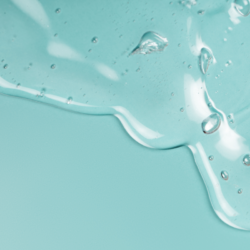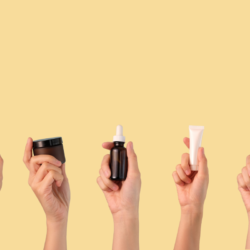In order to provide the right care for your face, it is essential to determine your skin type . Indeed, in a society where discomfort takes an increasingly important place, having beautiful skin has become a daily concern. In drugstore, questions are recurring: Which day cream should I choose? Which facial cleanser should I favor? What is my skin type?
Discover in this article what are the main roles, the factors influencing its quality , as well as the characteristics that determine your skin type : normal, dry, oily, combination or dehydrated, in order to adopt a skincare routine adapted to your skin . skin sparkling with beauty!
Anatomical reminder (integumentary system)
Its functions:
|
Functions: |
Mechanisms |
| Protects deep tissue against: | |
|
Its physical barrier contains keratin, which gives cells their resistance, and pressure and pain receptors, which alert the nervous system to possible damage. |
|
Its keratinized cells are relatively waterproof. They contain pain receptors, which alert the nervous system to possible damage. |
|
Its surface is continuous and it creates a film of acidic liquid delaying the multiplication of bacteria; its phagocytes ingest foreign substances and pathogens to prevent them from entering the deepest tissues. |
|
The melanin synthesized by melanocytes provides protection against damage that can be caused by UV rays. |
|
It contains waterproofing substances: glycolipids and keratin |
|
|
|
These substances are eliminated by the sweat produced by the sweat glands. |
|
Modified cholesterol molecules in the dermis are converted into vitamin D under the effect of sunlight. |
Why do some people have oily skin, others dry skin?
Our skin type depends on the quality of our hydrolipidic film .
Kesako?
The hydrolipidic film is the protective barrier on the surface; a mixture of sweat and sebum forming our skin flora:
- Sebum prevents water from evaporating and helps fight pathogenic germs.
- In addition to regulating body heat, sweat is responsible for skin hydration and skin balance.
Factors influencing the quality of our hydrolipidic film :
- Age
- Health
- Weather
- Pollution
- Physical
Characteristics of different skin types
|
Skin types |
Characteristics |
This type of skin is unfortunately quite rare, if this is your case, you are in luck! |
|
Skin dryness reflects a lack of sebum . Poor in lipids, the hydrolipidic film becomes too permeable: poorly protected, it is easily dehydrated. |
|
Oily skin produces more sebum, impurities such as dust can easily settle and remain stuck on the face, a real nest for bacteria and the appearance of pimples … The only advantage is that the hydrolipidic film of oily skin is rich in protective lipids, and is more resistant to time, thus delaying the first signs of aging. Note that oily skin still needs to be hydrated just as much as any other, so opt for a mattifying fluid treatment . |
|
It is a mixture of two types of skin:
|
|
Dehydrated skin is skin that lacks water:
Factors that can be the cause of dehydration of the skin: – Temperature change – The stress, – A poor lifestyle (lack of sleep and unbalanced diet) – Cosmetics ill-suited to the needs of dehydrated skin. |
|
The drop in female hormones, estrogen and progesterone, creates a physical imbalance that affects the skin. |
Tips for determining your skin type
Determining your skin type is not as easy as you might think. To make no mistake, you can go to a beautician or a dermatologist. They will make a skin diagnosis and give you all the facial care advice adapted to your type.
You can also tell by looking at yourself in a mirror. Opt for a magnifying mirror for more precision. There are certain indicators that are not mistaken.
You need to look to see if your face has large pores, blackheads, patches of dryness, and redness.
You should also know if your complexion is dull or bright, if your skin is thin, thick, soft, rough or sticky.
Is your skin comfortable? Do you feel tight after cleaning your face?
If you still have some doubts, you can take the tissue test:
- Cleanse your skin with a neutral pH treatment to respect the natural balance of your dermal flora.
- Wait for 30 minutes
- Lay two strips of tissue paper over your face. The first going from the forehead to the chin and the second from the right cheek to the left temple
- Press the strips for 2-3 minutes before removing them and see if any greasy deposit is visible or not







